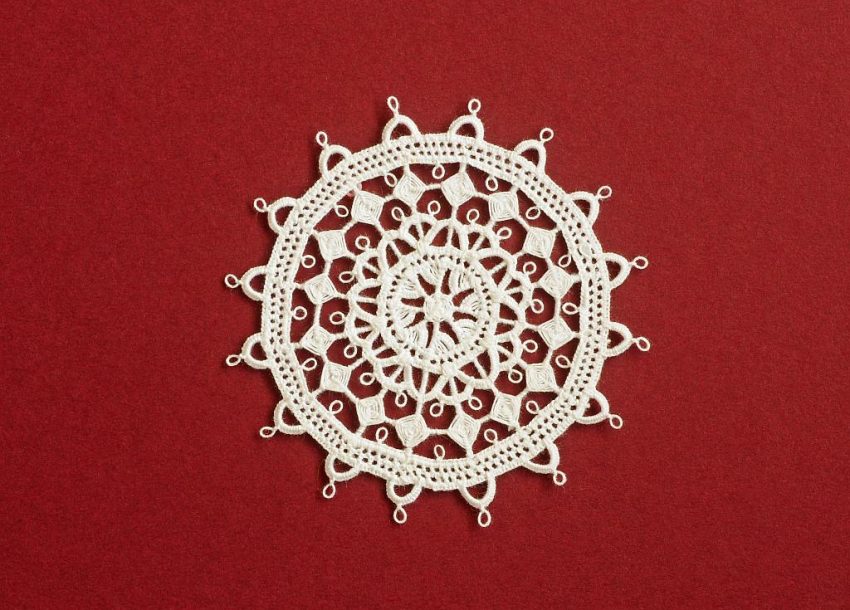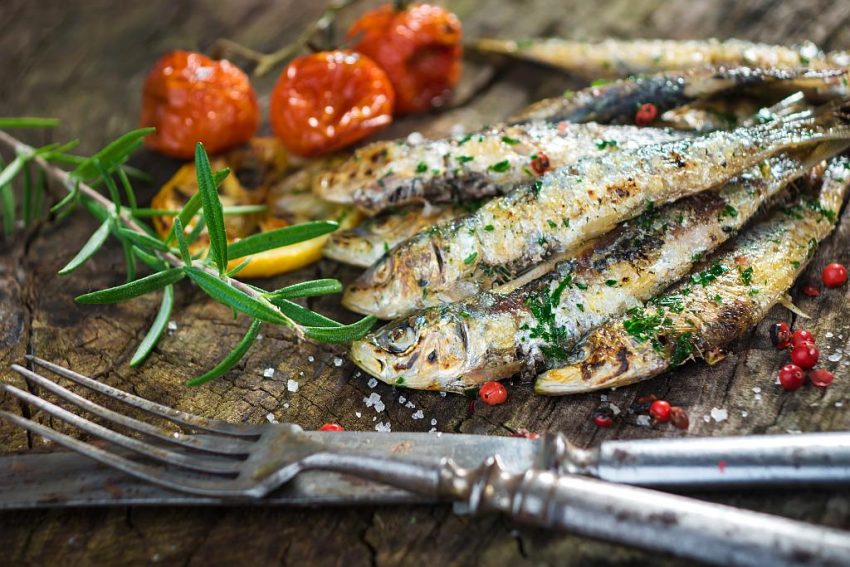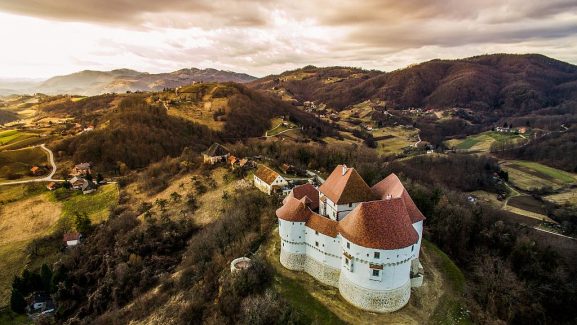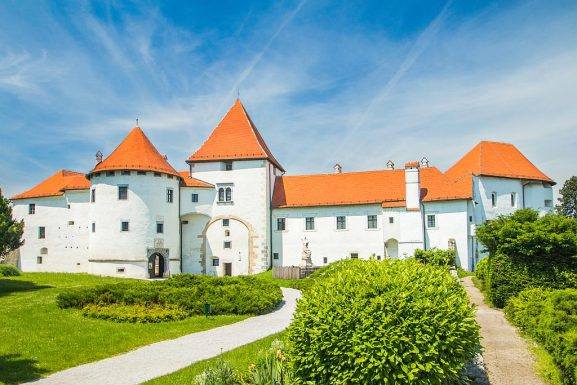Croatian Intangible Cultural Heritage
UNESCO established its lists of Intangible Cultural Heritage with the aim of protecting valuable intangible heritages around the world. Croatia is the country with the largest number of protected cultural phenomena in Europe with 14 Intangible Cultural Heritages added to the UNESCO list. Only Japan, China, and Korea have more registered phenomena.
Sinjska Alka, a knights’ tournament in Sinj
Sinjska Alka is medieval equestrian competition, held in the town of Sinj every first Sunday in August since 1717 and it honors the Croatian-Venetian victory during the Ottoman invasion. Sinjska Alka was inscribed in the UNESCO Intangible Cultural Heritage List in 2010. This particular event consists of a competition in which several horsemen ride at full gallop aiming their lances at an iron ring called Alka, suspended a few meters above the ground and are awarded points depending on which part of the ring they are able to pierce. Participating in the competition is considered of a great privilege and only men born in Sinj municipality can take part in Sinjska Alka.
Festivity of Saint Blaise, patron saint of Dubrovnik
More than thousand years old, the tradition of the Festival of St. Blaise began in 972 after the saint appeared to a priest urging him to tell to Dubrovnik Senate that the Venetians are about to attack them. After the citizens of Dubrovnik managed to stop the Venetians from conquering the town, they declared St Blaise as Dubrovnik’s main patron. St Blaise is celebrated yearly on 3 February, when relics of the saint, his head, a bit of bone from his throat, his right hand and his left, are paraded in reliquaries, but the Festivity starts on the day of Our Lady of Candelora, celebrated on February 2, with the releasing of white doves, which symbolize freedom and peace, in front of Dubrovnik Cathedral. This stunning festivity was inscribed in the UNESCO Intangible Cultural Heritage List in 2009.
Annual carnival bell ringers’ pageant from the Kastav area
The most famous procession participants of the Rijeka Carnival magic are the bell ringers. Following the centuries old route, they walk from village to village, making a lot of noise in order to scare away evil spirits of winter and welcome the spring. Besides the Halubje bell ringers (Marčelji and Viškovo), there are quite a lot of more groups from Brgud, Bregi, Mučići, Rukavac, Mune, Zamet, and Žejane. The bell ringers from the west have numerous smaller bells around their waist, their faces are able to be seen and they also wear a hat with greenery and colorful paper flowers (krabujosnica), whereas on the other hand, from the east wear big masks and a single large bell. It was added to UNESCO’s Representative List of the Intangible Cultural Heritage of Humanity in 2009.
Gingerbread craft from northern Croatia – Licitar
Licitars are colorfully decorated biscuits made of sweet honey dough and are an important part of Croatian cultural heritage. The tradition of preparing and decorating licitars dates back to the 16th century and they became a symbol of Zagreb – during Christmas time Zagreb is adorned with thousands of licitars and the Christmas tree on the main square is decorated with thousands of heart-shaped licitars. Licitars are prepared with simple ingredients, which are honey, eggs, flour, water and edible natural colors, then decorated with a swirling outline, text or even a small mirror placed in the center. An interesting fact is that they are often called gingerbread, although Licitars are made without ginger. Licitars are a perfect souvenir and an ornamental gift, often given at celebrations like weddings, anniversaries etc. Gingerbread craft from northern Croatia (Licitar) was inscribed in the UNESCO Intangible Cultural Heritage List in 2010.

Ojkanje singing
Ojkanje singing is a tradition of folk singing in Dalmatian hinterland and some parts of Central Croatia. The Harvard Dictionary of Music (2003) describes this singing style as: “The ojkanje is a peculiar style of singing melisma with a sharp and prolonged shaking of the voice on the syllables oj or hoj.” This singing style is marked by a distinctive voice-shaking technique where the singers utilize an archaic form of singing from the throat. Ojkanje singing was inscribed in the UNESCO Intangible Cultural Heritage List in 2010.
Lacemaking
Lacemaking was added to the UNESCO’s Representative List of the Intangible Cultural Heritage of Humanity in 2009, represented by the Pag, Hvar and Lepoglava lace. Lacemaking dates back to the Renaissance and the Croatian lace has become renowned for its unique designs and patterns. For example, the particularity of the Hvar lace is that the thread is collected from the aloe leaves of agave plants that grow on the island. In the town of Pag, there is a small lace gallery and in Lepoglava you can visit the Eco-museum of Lace and Lacemaking where you can admire a part of Croatian culture, some unique examples of lacework, attend workshops and classes and much more. To celebrate this particular cultural heritage, every year in September international lace festival is held in Lepoglava.

Traditional manufacturing of Children’s Wooden Toys in Hrvatsko Zagorje
This interesting craft was developed back in the 19th century when villagers developed a technique for manufacturing colorful wooden toys for children. The men cut and carve the wood (lime, beech or maple wood) using traditional tools, then the women decorate these toys with eco-friendly natural paints. Flapping butterflies, jumping horses, whistles, cars and many other fantastic wooden toys for children are still produced in the same way as more than a century ago. Traditional manufacturing of children’s wooden toys in Zagorje was inscribed in the UNESCO Intangible Cultural Heritage List in 2009.
Nijemo Kolo, silent circle dance of the Dalmatian hinterland
Nijemo Kolo is a silent dance originating from the Dalmatian hinterland in southern Croatia, included on the UNESCO Intangible Cultural Heritage list back in 2011. It is a dance performed by forming a closed circle, with the men leading their female partners in quick, vigorous and improvised steps. But maybe the most interesting thing about this dance is that it is performed completely without any music. Today, the performances of this particular dance can be seen during the festivals and various celebrations.
Procession Za Križen (Following the Cross) on the island of Hvar
The many centuries old traditional procession Za Križen (Following the Cross) on the island of Hvar happens on the night from Maundy Thursday till Good Friday when thousands of guests and local worshippers walk 27 kilometers following the cross. Convoys from all six parishes from Hvar leave in the evening, and they do not pass each other when they are on their way. The procession is led by a cross-bearer who is accompanied by two assistants; large candlesticks are carried by two followers, two lead singers and many people who react by singing the Lamentations of the Virgin Mary. All members of this convoy wear white brotherhood tunics. The priest then blesses the cross at the parish church and ropes it while the singers sing the Lamentations of the Virgin Mary and the walk then continues. There are many available records which write about the cross bleeding which happened on 6 February 1510 in the house of Nikola Bevilaqua when the riots between the masses and the noblemen were taking place.
Two-part singing and playing in the Istrian scale
Two-part singing and playing in the Istrian Scale is a complex style of folk music genres which use the scale. The custom of narrow breaks in music in Istria and the Croatian Littoral has been the center of much interest for Croatian researchers throughout the entire 20th century. In the 1920s Ivan Matetić Ronjgov established the term Istrian scale, disagreeing between its four basic types, but in the 80s, certain researchers initiated the term narrow intervals since it describes the complex relations between the tones in this tradition.
Spring procession of Ljelje/Kraljice (queens) from Gorjani
The annual spring procession of Ljelje/Kraljice (Queens) from Gorjani near Đakovo is held on Whit Sunday and is characterized by colorful folk costumes with lavishly decorated high hats and Sabers. It is performed by young girls, who sing from house to house in procession. In 2009, UNESCO inscribed the spring procession on the List of the Intangible Cultural Heritage of Humanity.
Bećarac singing and playing from Eastern Croatia
Bećarac is humorous folk singing, very popular and an integrated part of cultures of Slavonia, Srijem, and Baranja. Becarac singing is often performed on various merry occasions, especially on wedding celebrations. It is usually performed by three or more singers accompanied by instruments. One singer usually sings the first verse which presents a kind of meaningful thesis, and then the second verse is sung by all singers in a humorous way that leaves lots of space for improvisation. Singers often express thoughts and feelings about love, village life, and relationships in a funny way, that on other occasions would be considered inappropriate. In 2011, UNESCO inscribed Bećarac singing on the List of the Intangible Cultural Heritage of Humanity.
Klapa multipart singing of Dalmatia, southern Croatia
Klapa is traditional Dalmatian a cappella singing group. Klapa is usually composed of several singers, a first tenor, a second tenor, a baritone, and a bass. There are also female klapa groups that gained popularity in the recent times. The most important event dedicated to this form of singing is Omiš Festival of Dalmatian Klapa and it is usually held on the weekends from the end of June until the end of July. In 2012, UNESCO inscribed the klapa singing on the List of the Intangible Cultural Heritage of Humanity.
Mediterranean diet, shared with Cyprus, Spain, Greece, Italy, Morocco, and Portugal
UNESCO recognized the Mediterranean Diet in 2013 as an Intangible Cultural Heritage of Portugal, Spain, Italy, Croatia, Greece, Cyprus, and Morocco. Inspired by a traditional cuisine of these Mediterranean countries, the diet has always been a synonym of a healthy way of living. It was chosen because “The Mediterranean diet involves a set of skills, knowledge, rituals, symbols and traditions concerning crops, harvesting, fishing, animal husbandry, conservation, processing, cooking, and particularly the sharing and consumption of food.” – UNESCO




